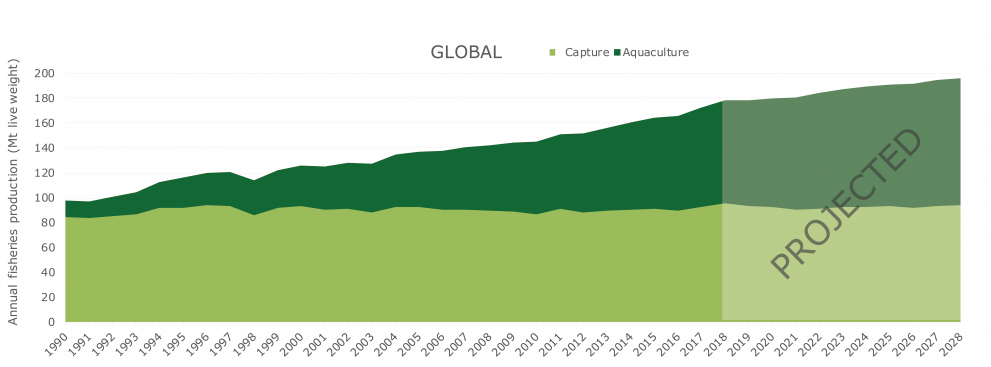
A new brief prepared by the JRC for the European Commission’s Knowledge Centre for Bioeconomy (KCB) offers insights into the current global and EU trends and issues in fisheries and aquaculture biomass production.
Although the status of fish stocks is steadily improving in the EU waters of the Northeast Atlantic, severe overfishing in the Mediterranean and Black Seas still needs to be curbed in order to strengthen a sustainable and circular bioeconomy.
What is fisheries biomass and how is it used?
Fisheries biomass is the total weight of extracted fish and shellfish. It is either captured from the wild or produced through aquaculture.
Fisheries biomass is traditionally used as food and feed, making an important contribution to food and nutrition security.
In recent years, innovative uses have been explored for fish and shellfish, and in particular for their by-products. For example, fish oil is used in the pharmaceutical industry for omega-3 nutraceutical products.
How is fisheries biomass produced globally and in the EU?
The figures included in the brief allow the reader to observe and compare global and EU trends related to both wild capture and aquaculture.
Globally, capture fisheries production has been relatively stable since the late 1980s, producing around 90 Mt per year.
By contrast, aquaculture is the fastest-growing animal-food-producing sector in the world.
From a small fraction of total fisheries biomass production in the late 1980s, global aquaculture production reached 80.1 Mt by 2017, mostly from Asian countries.

In 2017, EU fisheries and aquaculture produced 6.0 Mt - 3.5% of global production - with 81% from wild fisheries and 19% from aquaculture.
The EU differs from the global trends for capture fisheries and aquaculture, in that EU aquaculture production is stable, while capture fisheries (which had decreased by 43% between 1990 and 2012) has been showing a slight increasing trend in recent years.

Are fish stocks managed sustainably?
Globally, most commercially exploited fish stocks are under high fishing pressure: 33% of the marine fish stocks monitored by the Food and Agriculture Organization of the United Nations (FAO) are estimated to be overfished, 60% sustainably exploited to their maximum extent, and only 7% underfished.

|
The turquoise line depicts the exploitation level (fishing mortality relative to MSY level), which should be no greater than 1. The green line represents the conservation level (i.e. the weight of the adult biomass) relative to the 2003 level. Ideally it should be above 1 and show an increasing trend. |
In the EU, the Common Fisheries Policy (CFP) aims to ensure that fishing and aquaculture are environmentally, economically and socially sustainable.
In the Northeast Atlantic, where reduced fishing pressure has led to an improvement in the status of stocks in recent years, 38% of the stocks assessed were still overfished in 2018.
Things are even more serious in the Mediterranean Sea and Black Sea, where no apparent improvement has been observed: in 2017, 93% of the stocks assessed were overfished.
Further information
- KCB Brief on fisheries and aquaculture biomass production
- KCB Brief on algae biomass production
- European Commission’s Knowledge Centre for Bioeconomy
- Reports of the Scientific, Technical and Economic Committee for Fisheries (STECF)
- The EU Blue Economy Report
Related Content
KCB Brief on fisheries and aquaculture biomass production
KCB Brief on algae biomass production
European Commission’s Knowledge Centre for Bioeconomy
Reports of the Scientific, Technical and Economic Committee for Fisheries (STECF)
Details
- Publication date
- 11 September 2020
